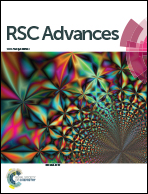Comparison of metal chloride-doped graphene electrode fabrication processes for GaN-based light emitting diodes
Abstract
The effect of inductively coupled plasma (ICP) etching on the performance of light emitting diodes (LEDs) with doped graphene (D-G) electrodes was investigated. The sheet resistance decreased from 220 Ω sq−1 to 105–140 Ω sq−1, and the value of the work function increased from 4.2 eV to the 4.9–5.1 eV range after four-layer graphene was doped with metal chlorides. The voltage at a 10 mA current was 5.5 V for LEDs with pristine graphene (P-G) and D-G electrodes when graphene was treated using the ICP etching step. The ICP etching process heated the D-G, recovering P-G properties in D-G and depositing residual photoresist on the graphene surface. Therefore, no difference was found in the electrical and luminance characteristics of P-G and D-G LEDs. The voltage at a 10 mA current was lowered to 4.25–4.5 V for LEDs using D-G electrodes without ICP etching. The luminance properties of these LEDs were improved compared to the LED with a P-G electrode. The decrease in the sheet resistance and increase in the value of the work function in D-G enhanced the electrical properties of the LEDs. Therefore, avoiding the ICP etching step is better for D-G electrodes in GaN-based LEDs.


 Please wait while we load your content...
Please wait while we load your content...